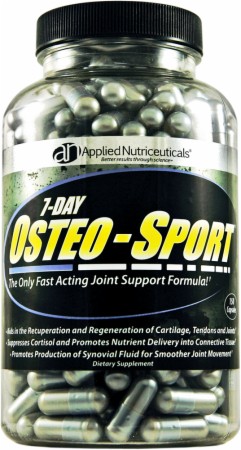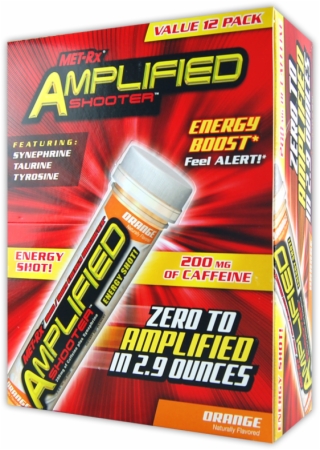
Cancer Defeated Update
By Lee Euler
Some cancer remedies work, some don't
As the publisher, I've had the opportunity to meet and work with some great doctors and researchers in this field. Thanks to them I know a lot more about successful cancer treatment than I did just a couple of years ago.
For sure I know two things: some alternative cancer treatments do work.
They don't work 100% of the time, and nobody claims they do. But there are plenty of people walking around healthy today -- years after conventional doctors told them they had only a few months left.
The second thing I've learned is this: there are DOZENS of alternative cancer treatments and some of them sound pretty flaky. It's really hard to sort out what you should do.
I'm in the same boat as you
I'm not a health professional and I'm not a scientist. I'm just a writer/publisher who got interested in this stuff because I want to know what steps to take if a doctor tells me I've got cancer.
My colleagues and I formed a new company, Online Publishing & Marketing, to help answer that very question. Our mission is to sort through the mountain of confusing information so you can make an informed decision about cancer treatment.
In the past several years, eight of my relatives and friends have been diagnosed with cancer, and two have passed away. It's a big, big topic in my family, I guarantee you.
That's why I want you to know about a natural health book I came across called Rethinking Cancer, by Ruth Sackman.
This is THE book if you want total health instead of a band-aid approach
Rethinking Cancer will surprise a lot of people. What's more, some people aren't going to like it - including some top experts in alternative health.
If you think there's a magic supplement out there that's going to cure cancer, you may not like this book.
Sackman is not against supplements. She even recommends some of them under certain circumstances. But in her opinion pills are not the answer.
She also believes that most of the people who offer cancer alternatives are sincere - they just happen to be wrong. That includes your cousin or your best friend's aunt who knows somebody who cured their cancer with an alternative approach.
Of course, they want to help. But Ruth Sackman believes their advice is usually wrong and sometimes it's downright dangerous.
There are a lot of alternative remedies, and Sackman admits that sometimes they shrink tumors 50 percent or 70 percent or even 90 percent. But that's not a cure, by her strict standards. It's a band-aid approach. All too often the cancer comes back worse than ever.
Why you should listen to Ruth Sackman
I'm not sure Ruth Sackman is completely right, but let me tell you, one light after another went on in my brain as I read her book and realized she could be on the right track.
Reading the book, I remembered that alternative therapists do often speak of shrinking tumors, not getting rid of them. And if you look at things the way Sackman does, those are weasel words. "Shrinking" is not enough.
Heaven knows I don't knock it. It's better than nothing!
But you should read and consider Rethinking Cancer if you want to get totally well - if you want to eliminate the root causes of this disease. In a moment I'll tell you how to get a copy.
How Sackman became a cancer crusader
Sackman lost a daughter, Arlene, to leukemia more than 30 years ago. That would be tragic for any of us, but it was even worse because the cancer was detected early, and her young, healthy daughter seemed like an ideal person to beat it.
Unfortunately, Arlene and her parents took the advice of conventional physicians and tried chemotherapy first. You won't be surprised that Arlene got worse instead of better.
She stopped the chemo and tried a nutritional approach, but her system was already so damaged by chemo that she didn't get the results she hoped for. Arlene panicked and went back on chemotherapy. As Sackman writes, "From then on it was all downhill."
After Arlene passed away, her mother took stock of what had happened. She saw that the nutritional approach had helped her daughter, and that Arlene probably should have stayed with it.
As a result of this horrible loss, Ruth Sackman became a lifelong cancer crusader. She co-founded a nonprofit group called the Foundation for Advancement in Cancer Therapy, or FACT.
You can discover what's worked for thousands of patients over the last 30 years
FACT does not treat patients nor does it officially endorse one treatment over another. It exists purely to gather and distribute information about cancer prevention and non-toxic cancer therapies.
What's more, FACT is supported by contributions. It's totally independent of doctors and other healthcare providers. There's nothing wrong with doctors, but often they can't speak freely because they're afraid of losing their licenses, or they may have a vested interest in one particular therapy. FACT didn't want to be tied up by those limitations.
The folks at FACT are free to speak their minds. Over the years, FACT has referred thousands of patients to practitioners who get good results time and time again.
And it's the feedback from all these patients over such a long period that makes Ruth Sackman's Rethinking Cancer such a valuable book.
If you're ready to get serious about beating cancer. . .
You'll learn all about Sackman's approach in the book (which you can click here to order, available in the U.S. only). But the quick summary is this: cancer is a systemic disease. In other words, Sackman believes the whole system is sick - the whole body is sick. The tumors or cancer cells are just symptoms of something deeper.
It makes sense. Just think of how often surgeons tell patients "they got it all," only to have the disease bounce back. Sounds like a systemic problem to me.
What's more, our bodies are sick because of the food we eat. Poor elimination of wastes makes the problem even worse.
Cancer is a disease at the cellular level - Sackman agrees with conventional medicine to that extent. But she says killing the sick cells isn't the answer. Neither are drugs OR supplements.
The answer is whole, unprocessed foods that supply the nutrients the body needs to build normal, healthy cells.
This strict diet can be used in conjunction with other therapies. Sackman endorses hyperthermia, the number one therapy in our Special Report Natural Cancer Remedies that Work, by Dr. Morton Walker.
Hyperthermia is based on the fact that a high fever kills cancer cells, and now doctors have safe ways to raise the body temperature without resorting to infection. Sackman has some valuable insights to add to what we told you in Natural Cancer Remedies.
Sackman also speaks favorably of Essiac, the North American Indian herbal remedy that's credited with thousands of successful cancer treatments over the last 70 years (it's Remedy #10 in Natural Cancer Remedies that Work. Click here if you don't own this report and would like to order a copy.)
But Sackman views all these measures as mere adjuncts to proper diet and waste elimination.
Keep reading if you hate the word "diet"
If you're like me, your eyes glaze over when someone says you have to totally change your life to get well. Give up meat, sugar, white flour, caffeine, and alcohol, and live on juices and raw vegetables? You've gotta be kidding!
That was the reaction of Richard A. Mott. Sackman describes his case history in detail, along with those of six other patients who survived from ten to thirty years after being declared "hopeless."
"Mr. Mott heard [the dietary] instructions with a sinking heart," Sackman writes. "As one whose meat-and-potatoes diet had been a daily necessity, he wondered whether this deprivation was worth the effort of saving his life. But then he thought, "Since my doctors give me only three months to live, why not give it a try?"
In six months Richard Mott went from being unable to get out of bed to being up and around, exercising a little and taking long walks in the country. His friends couldn't believe how well he looked.
And a few months after that, the same doctors who had wanted to remove his lung had to admit they couldn't find a trace of cancer in his body. In other words. . .
He achieved 100 percent remission
I'm impressed with Ruth Sackman's ideas because they fit so well with everything else I'm learning about alternative cancer treatments.
It's not only this book that sold me. Before I came across Rethinking Cancer, I heard dozens of similar case histories from many other sources. The more I learn, the more sense this approach makes.
One of the methods she recommends is called the Gerson Therapy. You'll find details on the Gerson Therapy in Natural Cancer Remedies that Work by Dr. Morton Walker.
When my associates and I first published this report a couple of years ago, my reaction to Gerson's diet was, "Yeah, right. Who's going to do that?"
Now that I've learned more, I have to tell you it would be the first thing I'd do if I found out I have cancer. And meanwhile, my everyday diet is moving closer and closer to Gerson's recommendations. (You might be relieved to learn that Sackman thinks a little meat is okay.)
228 pages of priceless information that can save your life
I've barely touched the surface of Ruth Sackman's remarkable book. I urge you to get your own copy (click here available in the U.S. only) and see for yourself.
Besides the Gerson Therapy, she gives you details on five other nutrition-based programs with solid track records, so you can make an informed decision.
And there's something very important I haven't mentioned: Sackman is frank about the distressing symptoms you may experience as your body ejects decades of toxins and poisons.
In fact, even a one-day juice fast can make some people feel ill. It's not the fast, it's the release and elimination of the poisons.
If you read the book, you'll know what to expect and you won't make the tragic mistake of giving up because you think you're getting sicker.
It's not all about diet
Besides hyperthermia and Essiac (the Indian herbal), Sackman gives you four additional therapies every cancer patient should know about.
In other words, it's not all about diet. It's just that nutrition is the main event.
She winds up the book with the answers to 60 frequently asked questions. She already knows what you'd ask if you could meet her in person, because she's helped so many people over many decades.
Are chemotherapy or radiation ever the right decision? Surprisingly, Sackman says they sometimes are.
Do you have to be a total vegetarian? (The short answer is no. But see the details.)
Is surgery ever the right answer for breast cancer?
Are conventional cancer treatments leading to longer survival times, as doctors claim? Sackman says no, and she explains why the statistics are misleading. In fact, the cancer death rate is going up.
What can you do to get the facts out of a doctor who wants to be "kind" and not tell you the truth about your disease? You have the right to know, but have to know how to ask.
What does she think of the claims for vitamin C made by Linus Pauling and others?
Are child vaccinations a bad idea?
Do biopsies spread cancer?
You'll get the answers to these and many other questions.
You're protected by our money-back guarantee
Just take a look at Rethinking Cancer. You take no risk. If you're not satisfied with the book for any reason, return it to us and you'll receive a full, 100% refund, no questions asked. And take your time - you can look at it for 60 days before making a decision. CLICK HERE TO ORDER (Available in the U.S. only).

















